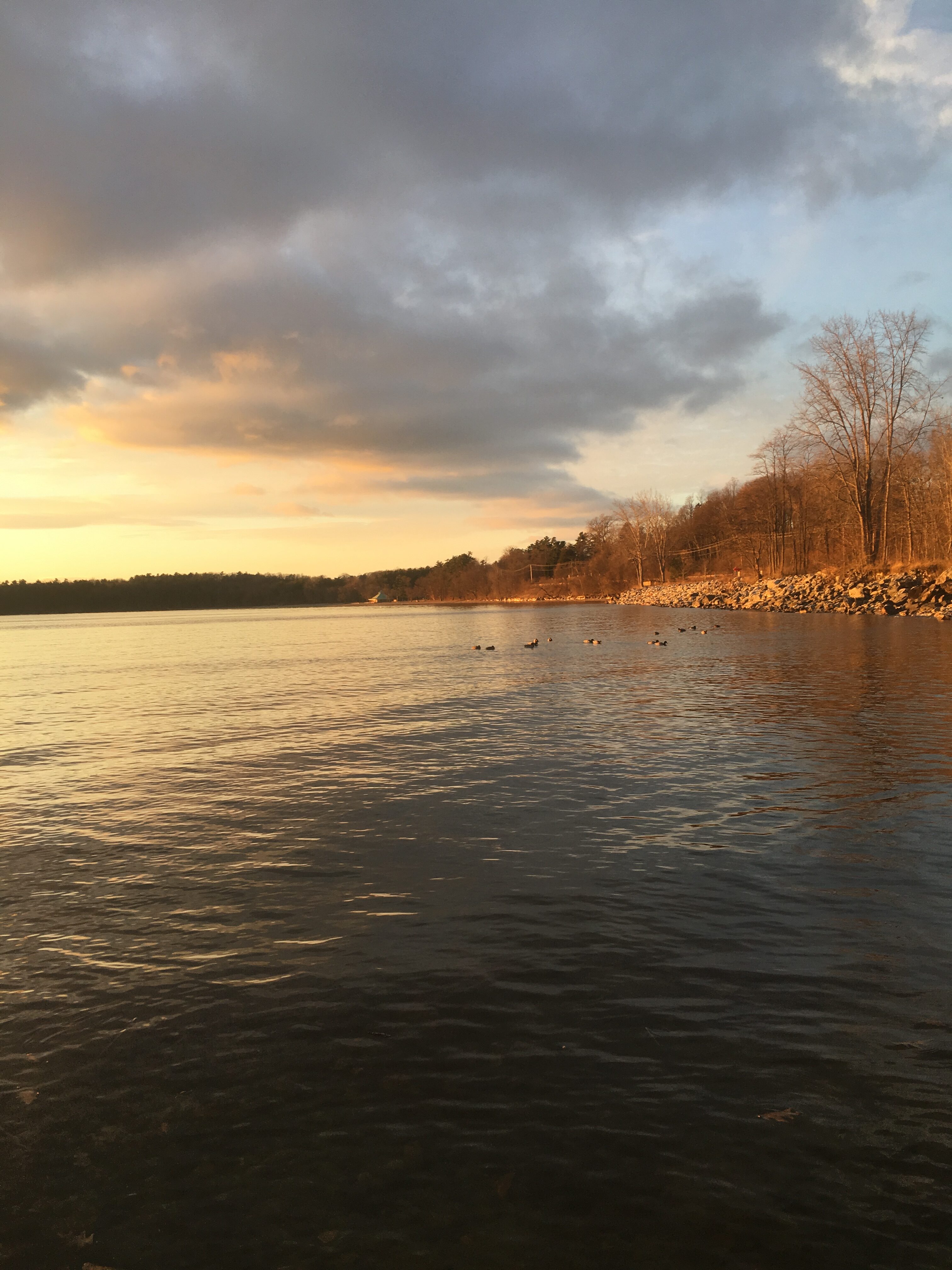On Tuesday afternoon I walked down to the waterfront to check out my phenology site. I usually ride my bike down, and I was surprised when the walk took almost an hour. However, it did give me lots of time to reflect on what this place has been for me. It’s hard to believe that my first semester here is almost over, and I’m a bit nostalgic to think about how fast these few months have flown by. One of the hardest things about coming to a new place for me is connecting with people. There were a few times early this fall when I felt pretty lonely, especially early weekend mornings when no one else was awake. On these occasions, I often got on my bike, went down to the water and swam. This beach was my first real friend, the first one to give me a hug, at least. It was an escape and a release from all of the stresses of being alone in a new place.
The waterfront and the small slice of beach that is my phenology site has a rich history of human land use. Prior to 1700, the area that is now “my” beach was underwater, and a large bluff a few hundred feet inland was the shoreline. Abenaki people used the less steep parts of the bluff to fish and access other resources at the water’s edge, and they paddled the water in dug-out canoes. The first settlement arrived in 1772, but the first buildings didn’t pop up until 1792. Goods such as molasses and sugar were shipped in from Whitehall, New York, and the lumber shipping industry was established. By 1800, the village of Burlington bay had innkeepers, retail merchants, a silversmith, blacksmith, and some other workshops. The Vermonters sent cattle, cheese, butter, fish, flax, furs, grain, maple sugar, potash, pearl ash, sheep, and tobacco to Canada in return for gin, rum, salt, and luxury items from Europe like chocolate, coffee, tea, and textiles. In the 1850s, the waterfront became more industrialized, with lumber yards, train companies, power generating plants and water pumping facilities built upon created land – sand that was dumped in, called “fill”. In the 1900s the lumber profits began to wane, so the petroleum industry took over. Oil tanks and bollards became common sights on the waterfront. In 1991, the area was purchased by the city of Burlington, and in 1994 the last oil drum was removed. In 1997 a 12 year plan to revitalize the area was enacted. This plan emphasized open space, conservation, and public access. In 2012 voters passed a bill designating $6 million to waterfront revitalization. Today, it is a beautiful, safe, and accessible place to enjoy the outdoors.
(PBLAwaterfront. (2012, April 25). Retrieved December 05, 2018, from https://www.youtube.com/watch?time_continue=154&v=takWcU_R90M)
(Berrizbeitia, I. (n.d.). Focal Places in Burlington. Retrieved from https://www.uvm.edu/place/burlingtongeographic/focalplaces/wf-ecology.php)
Both of my parents went to UVM, and they always marvel at how nice the waterfront is now when they come to visit. They were graduates in the late 80’s, before the waterfront revitalization and at the end of the petroleum industry’s use of the waterfront. My mom has said that the area that is now the waterfront bike path was pretty sketchy – not the type of place a college-age girl really wanted to be. I can still see remnants of this past “sketchiness” when I go down to my phenology site – the decrepit brick “City of Burlington” building, and the large pieces of scrap metal lying near the path. I wish I could go back and see what the waterfront looked like before it was filled. I imagine that the bluffs were absolutely gorgeous, and teeming with wildlife.

On my way down to the water on Tuesday I passed a tree full of European Starlings, black and round and making an absolute racket. When I got to my beach 16 ducks quickly began to swim away from the piles of leaves at the water’s edge – from which they were eating. There was a light dusting of snow on the beach, and the only green vegitation came at the courtesy of the sole Northern White Cedar. I walked around and took a few photos, then just sat for a while, watching the sunset. A few minutes passed, and I heard the ducks honking. They seemed to have decided that I wasn’t a threat, and had returned to their leaves. It seemed somehow fitting – as the sun set on my first semester at UVM, just the ducks and I were sitting at the beach which soothed my loneliness back in August. It got dark, and therefore cold, so I began my long walk back to campus, and had dinner with friends.




Recent Comments